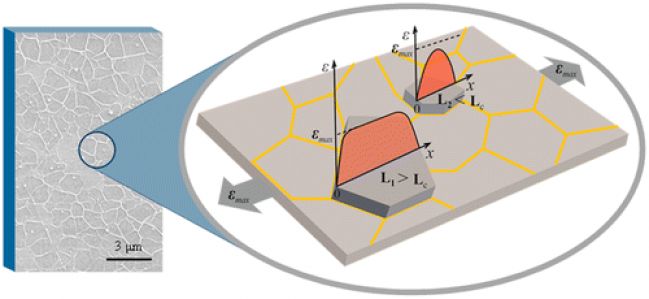Deformation of Wrinkled Graphene
Zheling Li, Ian A. Kinloch, Robert J. Young, Kostya S. Novoselov, George Anagnostopoulos, John Parthenios, Costas Galiotis, Konstantinos Papagelis, Ching-Yu Lu, and Liam Britnell. ACS Nano
DOI: 10.1021/nn507202c
The deformation of monolayer graphene, produced by chemical vapor deposition (CVD), on a polyester film substrate has been investigated through the use of Raman spectroscopy. It has been found that the microstructure of the CVD graphene consists of a hexagonal array of islands of flat monolayer graphene separated by wrinkled material. During deformation, it was found that the rate of shift of the Raman 2D band wavenumber per unit strain was less than 25% of that of flat flakes of mechanically exfoliated graphene, whereas the rate of band broadening per unit strain was about 75% of that of the exfoliated material.
This unusual deformation behavior has been modeled in terms of mechanically isolated graphene islands separated by the graphene wrinkles, with the strain distribution in each graphene island determined using shear lag analysis. The effect of the size and position of the Raman laser beam spot has also been incorporated in the model. The predictions fit well with the behavior observed experimentally for the Raman band shifts and broadening of the wrinkled CVD graphene. The effect of wrinkles upon the efficiency of graphene to reinforce nanocomposites is also discussed.
